France fuel protests: Tear gas fired in clashes in Paris
- Published
Tear gas filled the streets around the Arc de Triomphe
Protesters have scaled the Arc de Triomphe in central Paris, as clashes with riot police continued during a third weekend of "yellow vest" rallies.
Police fired tear gas, stun grenades and water cannon on the Champs-Elysées, while masked protesters hurled projectiles and set buildings on fire.
At least 110 people were injured, including 17 members of the security forces, and 270 arrests were made.
Protests over fuel tax have grown into general anger at higher living costs.
President Emmanuel Macron says his fuel policies are needed to combat global warming.
One person was in a critical condition after protesters pulled down an iron gate at the Tuileries garden near the Louvre museum, which fell on several people.
An assault rifle was also stolen from a police vehicle although it was unclear if it was loaded, AFP news agency quotes a police source as saying.
France fuel protests: Who are the people in the yellow vests?
The French interior ministry said at least 75,000 people had turned out across France for the latest "gilets jaunes" (yellow vest) rallies - so called because the protesters donned the high-vis vest required to be carried in every vehicle by law.
Nearly 190 fires were put out and six buildings were set ablaze, the interior ministry said.

The great unwashed
By Hugh Schofield, Paris
It is quite clear there were agitators or "casseurs" at the sharp end of the clashes with police. We saw groups of people both from the anarchist far left and from the nationalist far right. They were tooled up and ready for a fight.
The vast majority of "gilets jaunes" (yellow vests) who came to Paris to protest were not in that category. There were many who were happy to look on, jeering police and providing moral encouragement to the front lines.
And then there were the crowds who hung back - genuinely wanting nothing to do with the trouble. Inevitably even these people agreed it was the police who had started it all, by wanton use of tear gas.
The numbers were small, just a few thousand. But across the country the cause is extremely popular. They say - quite proudly - that they are the "sans-dents", the great unwashed, the forgotten majority from the sticks. And they've had enough.
Allow X content?
This article contains content provided by X. We ask for your permission before anything is loaded, as they may be using cookies and other technologies. You may want to read X’s cookie policy, external and privacy policy, external before accepting. To view this content choose ‘accept and continue’.

What has Macron said?
Responding to the day's events from the G20 summit in Buenos Aires, Mr Macron said the protests "had absolutely nothing to do with a peaceful demonstration of a legitimate unhappiness or discontent."
He said those responsible did not want change, but instead intended to "wreak chaos".
"No cause justifies that authorities are attacked, that businesses are plundered, that passers-by or journalists are threatened or that the Arc de Triomphe is defiled," he added.
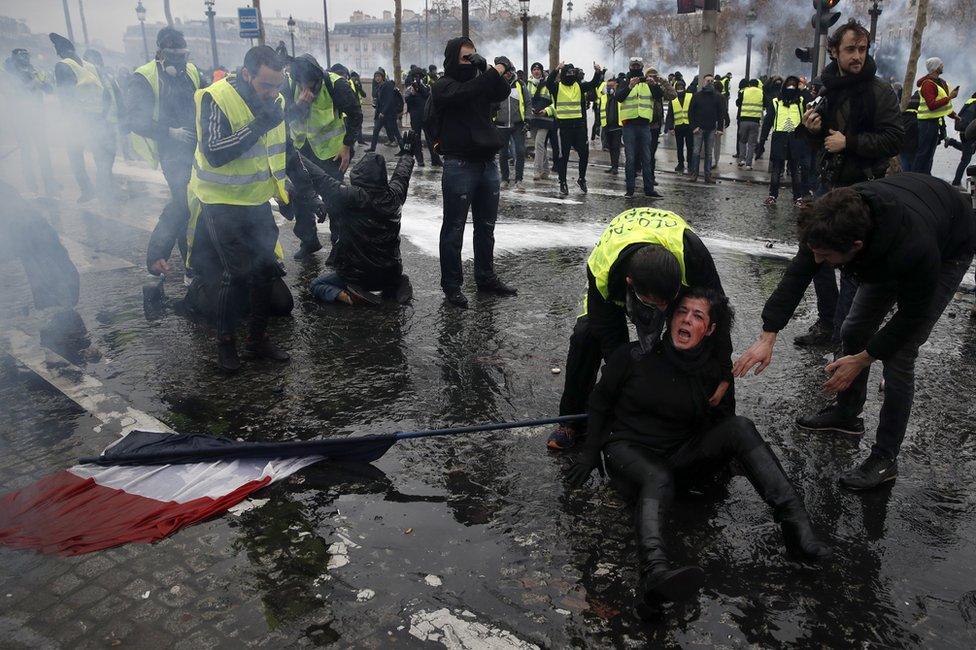
At least 110 people were injured
Earlier this week, Mr Macron tried to strike a conciliatory tone, saying he was open to ideas about how the fuel tax could be applied.
But his speech does not appear to have gone far enough in assuaging people of the view that he is out of touch with ordinary people.
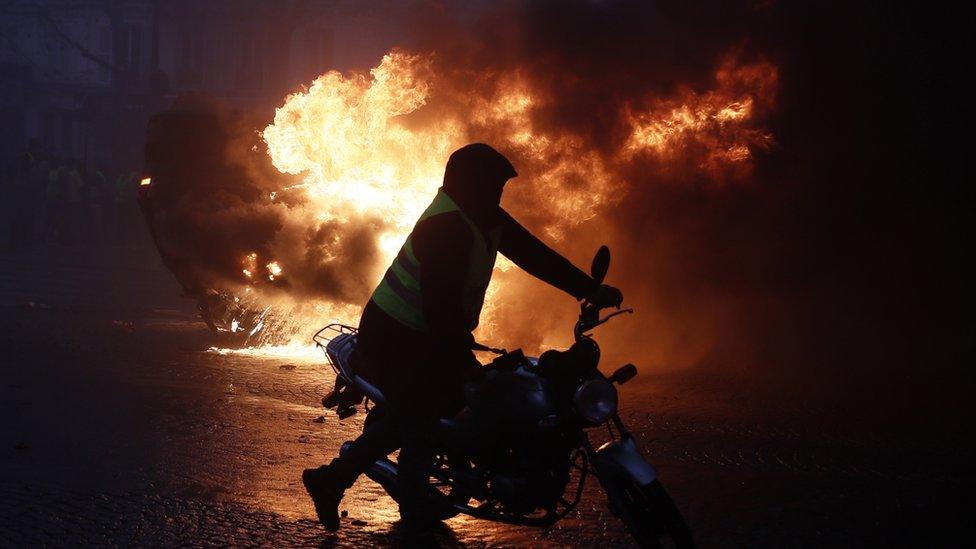
The Health Minister said the protests had been taken over by "extremist groups"
What happened on Saturday?
Dramatic protests took place over several hours in French capital.
One building was set on fire on a major avenue near the Arc de Triomphe and protesters stole an assault rifle from a police vehicle in the centre of the city.
Department stores and metro stations were closed as a result of the violence. But protesters insisted the movement was peaceful.
"It's a mess because we don't have a leader," Dan Lodi, 68, told AFP.
"You always have some idiots who come to fight, but they don't represent us at all," he said.
Among the peaceful demonstrators, who held up slogans such as "Macron, stop treating us like idiots", there were those hiding their faces with masks and goggles.
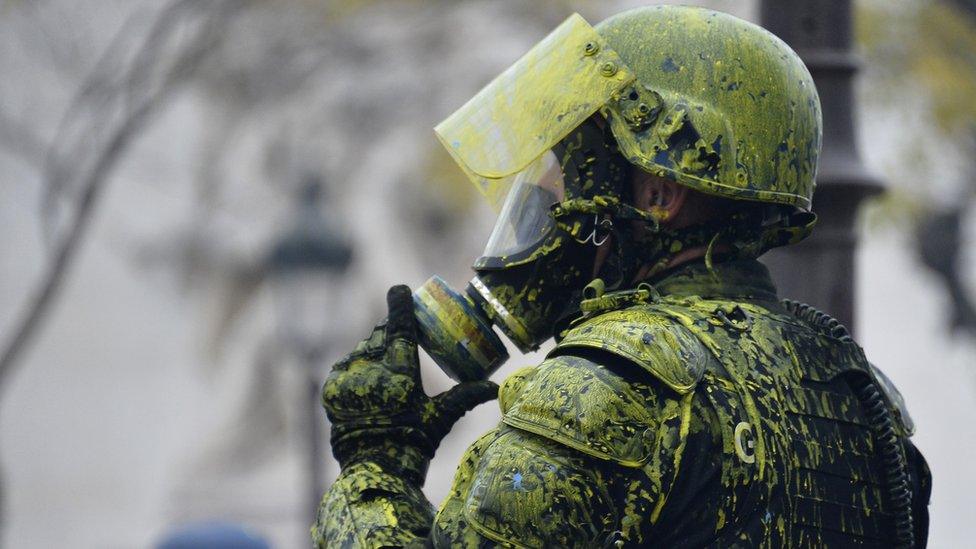
A number of officers, wearing protective gear and helmets, were spattered with vivid yellow paint
Police fired tear gas, a water cannon and stun grenades to disperse those who were trying to tear down the barricades.
Interior Minister Christophe Castaner, who visited the scene, tweeted that there were "1,500 agitators, external outside the security perimeter who came to fight".
He called the protests "an insult to the republic", external.
What else do we know about the protests?
The movement has grown via social media to encompass rising anger at high taxes and living costs, and broader criticism of President Macron's economic policies. It has supporters across the political spectrum, from far left to far right, although Mr Macron has accused his political opponents of hijacking the movement in order to block his reform programme.
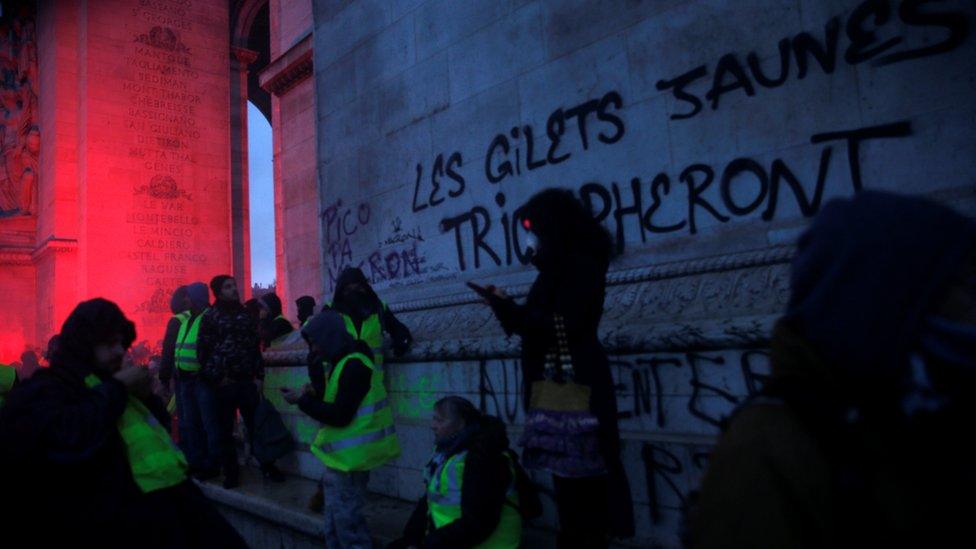
A sign on the Arc de Triomphe reads "The yellow vests will triumph"
Our correspondent says that because the movement has grown via social media, it does not have an identifiable leadership or a coherent demand. What it does have, he says, is a lot of co-ordination via Facebook and a lot of support from the public.
Nearly 300,000 people took part in the first country-wide demonstration, on 17 November.
Most demonstrators have remained peaceful, although more than 200 people were injured, several seriously. One person died when they were struck by a panicked driver and a motorcyclist was killed a few days later, when they were hit by a van making a sudden turn in the traffic chaos.
Why are drivers on the warpath?
The price of diesel, the most commonly used fuel in French cars, has risen by around 23% over the past 12 months to an average of €1.51 (£1.32; $1.71) per litre, its highest point since the early 2000s.
World oil prices did rise before falling back again but the Macron government raised its hydrocarbon tax this year by 7.6 cents per litre on diesel and 3.9 cents on petrol, as part of a campaign for cleaner cars and fuel.
The decision to impose a further increase of 6.5 cents on diesel and 2.9 cents on petrol on 1 January 2019 was seen as the final straw.
- Published1 December 2018
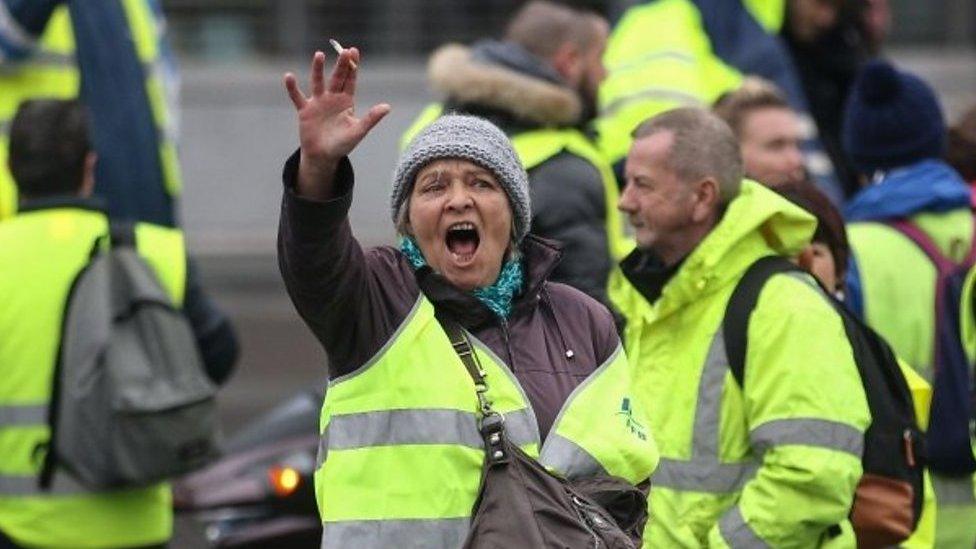
- Published24 November 2018
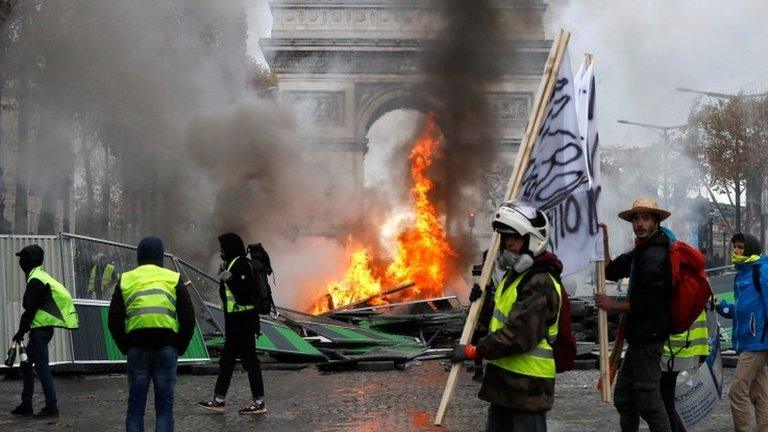
- Published21 November 2018

- Published18 September 2018
